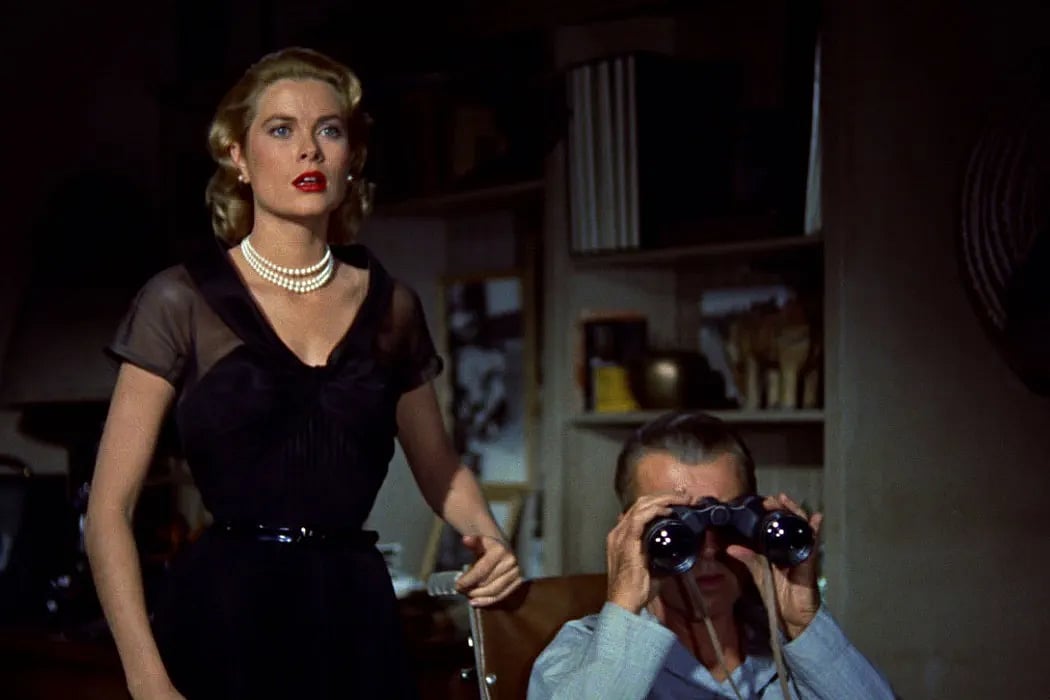The brouhaha over the colour of the bikini worn in a song from an upcoming film misses the more important issue — the way a woman is made to look sexy or desirable to pander to the male gaze.
A recent documentary by Nina Menkes — Brainwashed: Sex Camera Power, which is making the festival rounds, winning awards and generating debate — emphasises the point that in cinema, the “shot design is gendered” so that the woman is the ‘passive’ object and the man the ‘active’ subject. “Ways of seeing so specific that it almost feels like a law.”
The film, based on a talk by the filmmaker about the visual language of cinema in which she explains the basic structures that build a narrative: Subject/Object Definition, Framing, Camera Movement and Lighting, posits that men and women are always filmed differently and that has caused problems for women off screen too. As one of the interviewees says, “If the camera is predatory, the culture is predatory.”
The documentary is also structured like a talk, in which Nina Menkes illustrates her theories with many film clips and interviews of filmmakers, actresses, film scholars and psychologists. The clips are of movies by A List directors, some of which are award-winners at which audiences must have applauded without even noticing the objectification of women — as Menkes puts it, the “looked-at-ness” of women.
In Alfred Hitchcock’s films, his cool, blonde heroines, who seem to come out of a mould, are always seen from the point of view of the male — through windows, slats, peepholes — and that becomes the point of view of the audience as well. In so many other celebrated films too, the way women are framed and lit, they are fragmented into body parts (the camera pans over women’s bodies, stopping at breasts and hips in a voyueristic manner). Menkes says that the women are sexualised in this way, while men are usually seen in full frame; men are often fully dressed even when the women are nude or scantily dressed. Legends like Spike Lee, David Lynch, Paul Thomas Anderson, Martin Scorsese, Wim Wenders, Orson Welles, and Jean-Luc Godard come under criticism too.
This portrayal of women in cinema leads to not just sexual assault, but also employment discrimination against women in the film industry.
Close-ups of male faces are lit so that there is a 3D effect of light and shadow, that may highlight wrinkles and flaws, but young or glamorous women’s faces are shot with a 2D effect, smoothening out the skin to project an unrealistic beauty that has the effect of evoking self-loathing or insecurity in ordinary women. When men are shot in slow motion, it is usually in an action scene, while women in slo-mo are in sex object mode — like emerging from the water in a bikini. In many of the clips shown, women who were initially reluctant to have sex, were ‘persuaded’, mostly by aggression by the male, to acquiesce. This is followed by a brief but disturbing shot of Yale students shouting, “No means yes.”
When this cinema brand of misogyny is normalised, Menkes says, it is accepted and emulated, so the circle of sexual abuse and violence continues unchecked. The #MeToo movement just gave a glimpse of the extent of the problem.
Menkes was inspired by the theory of the “male gaze”, the term first used by feminist film theorist Laura Mulvey, who is interviewed in the documentary. And mainstream cinema — deliberately or unwittingly — uses the male point of view, and not just because a majority of directors and cinematographers are male. As an interviewee comments, this sexist film language is so pervasive that we don’t even notice it, “like the idea of a fish asking if it’s wet.”
Even as women have progressed in almost every male-dominated profession, there is still a very small percentage of female filmmakers in Hollywood; this, in spite of a 50-50 number of male and female students in film schools. Besides, a woman director working in Hollywood will seldom have an opportunity to break the rules — they will either make films about men (Kathryn Bigelow, the first woman to win a Best Director Oscar in 2012, made a war film, Zero Dark Thirty, without a single woman in the crew), or mimic the style of men. Menkes uses a clip from the film Lost In Translation by female filmmaker Sophia Coppola, in which the camera lingers on the leading lady’s backside clad in see-through underwear. Hollywood (and almost every other mainstream film industry) continues to propagate this “propaganda of patriarchy”.
Interestingly, it emerged from the interviews in the documentary that the earliest silent films made in Hollywood were by women; when sound was introduced, and Wall Street money was pumped into the movie industry, women were edged out of positions of power.
It's not just in commercial films but also in superhero movies, arthouse and indie ventures that women exist in a “male fantasy space.” Very rarely does a film emerge — like Chloe Zhao’s Nomadland, a story told from the point of view of a 60-year-old woman (the redoubtable, stereotype-breaker, Frances McDormand) — causing a tiny crack to appear in the wall of Hollywood sexism. Menkes does mention some other films that are away from the male gaze, but they are too few and far between. (The documentary is mostly about American and a few European films).
As Ray Lobo writes in his review in filmthreat.com, “Brainwashed is required viewing for film students, educators, those in the industry, and audiences. The audience’s gaze is implicated. Heterosexual, cisgender male audience members will discover how movies perpetuate the objectification of women in the greater culture outside of cinema. Female viewers will understand why they sometimes feel contempt for their bodies. When only certain cisgender female bodies, usually white, are the recipients of the male gaze, it is understandable why women feel as if their bodies are not worthy.”
The documentary has been criticised for being oversimplified, and taking just the heterosexual view into account, but it serves the purpose of showing audiences how they are being insiduously manipulated by cinema imagery. (There are books and research papers discussing this in greater detail.)
Nina Menkes quotes author James Baldwin as saying, “Nothing can be changed until it is fixed.” Maybe is time to understand, then try to fix whatever needs repair.
The writer is a Mumbai-based columnist, critic, and author










